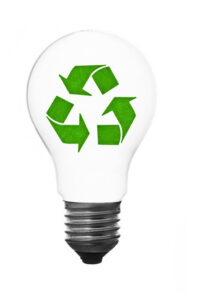In our digital age, electronics have become an indispensable part of our lives, from smartphones to household appliances. However, as technology advances, so do concerns about the environmental impact of electronic waste (e-waste). The Waste Electrical and Electronic Equipment (WEEE) Directive stands as a significant regulatory framework in the European Union (EU) aimed at addressing the challenges posed by e-waste. Enacted in 2003 and subsequently revised, the WEEE Directive outlines measures for the collection, recycling, and safe disposal of electronic waste, contributing to a more sustainable approach to electronics management.
E-waste is a growing global concern, with millions of tons generated annually worldwide. These discarded electronics contain hazardous materials such as lead, mercury, and cadmium, posing serious risks to human health and the environment if not managed properly. Additionally, e-waste often ends up in landfills or is illegally exported to developing countries, further exacerbating environmental degradation and health hazards.
The WEEE Directive was introduced to address these issues by establishing extended producer responsibility (EPR) schemes, promoting eco-design, and encouraging the proper treatment of electronic waste. It aims to reduce the environmental impact of electrical and electronic equipment throughout its lifecycle, from manufacturing to disposal, fostering a more circular economy approach.
Key Provisions:
Extended Producer Responsibility (EPR): One of the fundamental principles of the WEEE Directive is the concept of extended producer responsibility. This places the responsibility for the collection, treatment, and recycling of electronic waste on the producers of electrical and electronic equipment. Producers are required to take financial and operational responsibility for the end-of-life management of their products, incentivizing them to design products that are easier to recycle and dispose of safely.
Collection and Recycling Targets: The WEEE Directive sets ambitious targets for the collection, recycling, and recovery of e-waste. Member states are required to establish collection systems to ensure that consumers can conveniently dispose of their electronic waste free of charge. Additionally, targets are set for the recycling and recovery of specific materials contained in electronic products, such as metals, plastics, and glass.
Restriction of Hazardous Substances (RoHS): In conjunction with the WEEE Directive, the RoHS Directive restricts the use of certain hazardous substances in electrical and electronic equipment. By reducing the presence of substances such as lead, mercury, and cadmium in electronics, RoHS contributes to safer recycling processes and minimizes environmental and health risks associated with e-waste.
Impact and Challenges
Since its inception, the WEEE Directive has made significant strides in improving the management of electronic waste within the EU. It has led to the establishment of efficient collection and recycling systems, increased awareness among consumers, and stimulated innovation in eco-design practices. Moreover, by shifting the responsibility for e-waste management to producers, the directive has encouraged manufacturers to adopt more sustainable production methods and materials.
However, challenges remain, including the enforcement of regulations, illegal e-waste trade, and the need for harmonization across member states. Additionally, with the rapid pace of technological innovation, new types of electronic products are constantly entering the market, posing fresh challenges for recycling and disposal.
Future Outlook
As the EU continues to prioritize sustainability and circular economy initiatives, the WEEE Directive is likely to undergo further revisions and enhancements to address emerging challenges and opportunities in electronic waste management. This may include measures to improve traceability and tracking of electronic products throughout their lifecycle, promote repairability and durability, and further incentivize producers to adopt greener manufacturing practices.
The Waste Electrical and Electronic Equipment (WEEE) Directive represents a critical step towards achieving more sustainable electronics management within the European Union. By promoting extended producer responsibility, establishing collection and recycling targets, and restricting hazardous substances, the directive has paved the way for a more circular economy approach to electronic waste. As the global community grapples with the challenges of e-waste, the WEEE Directive serves as a model for effective regulation and collaboration towards a greener and more sustainable future.

